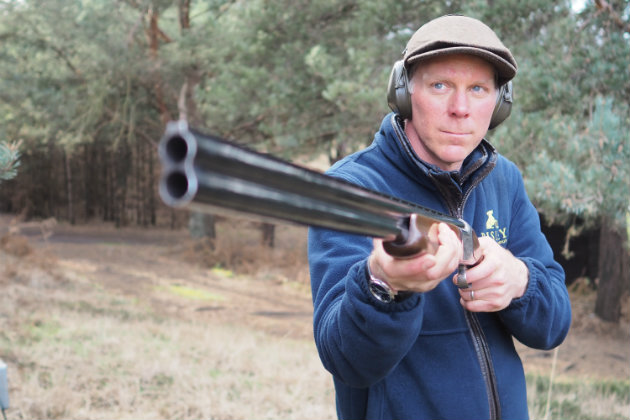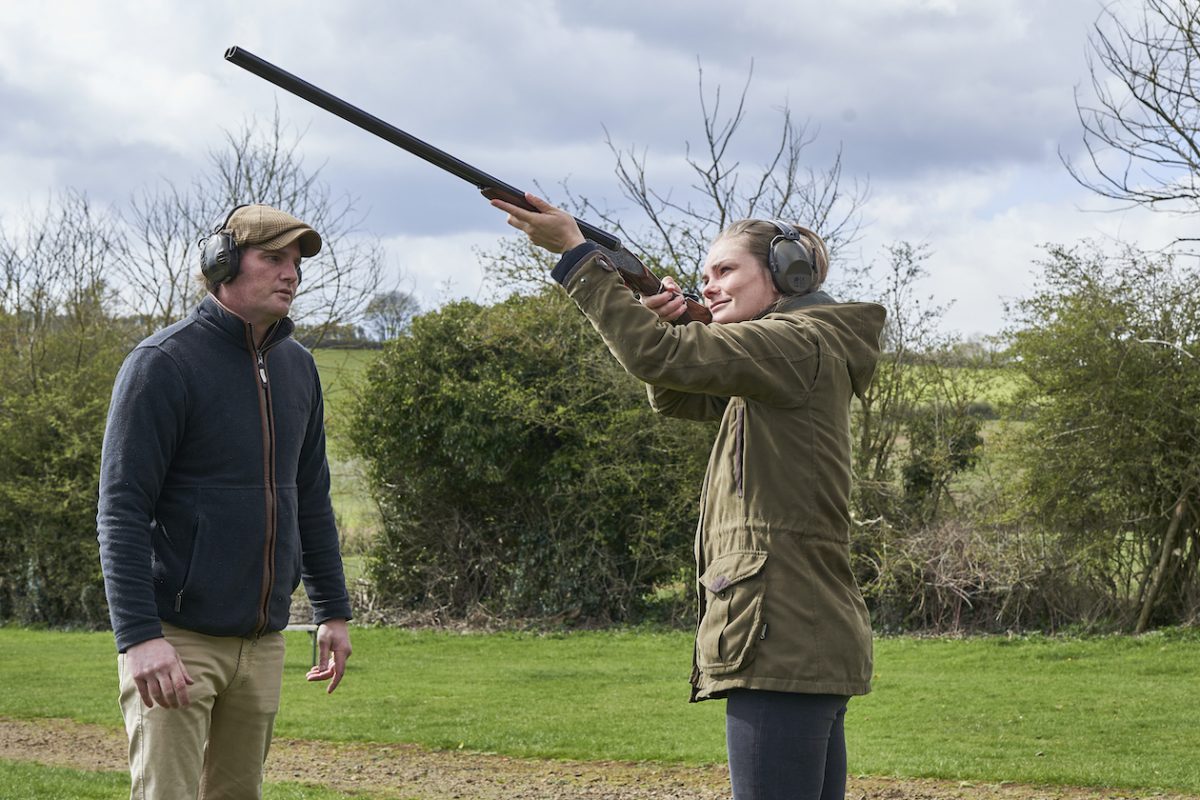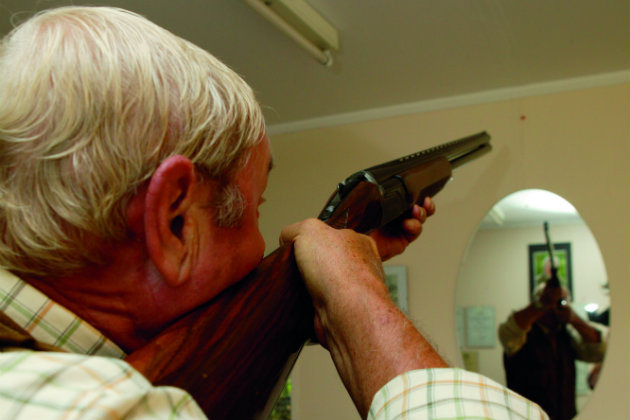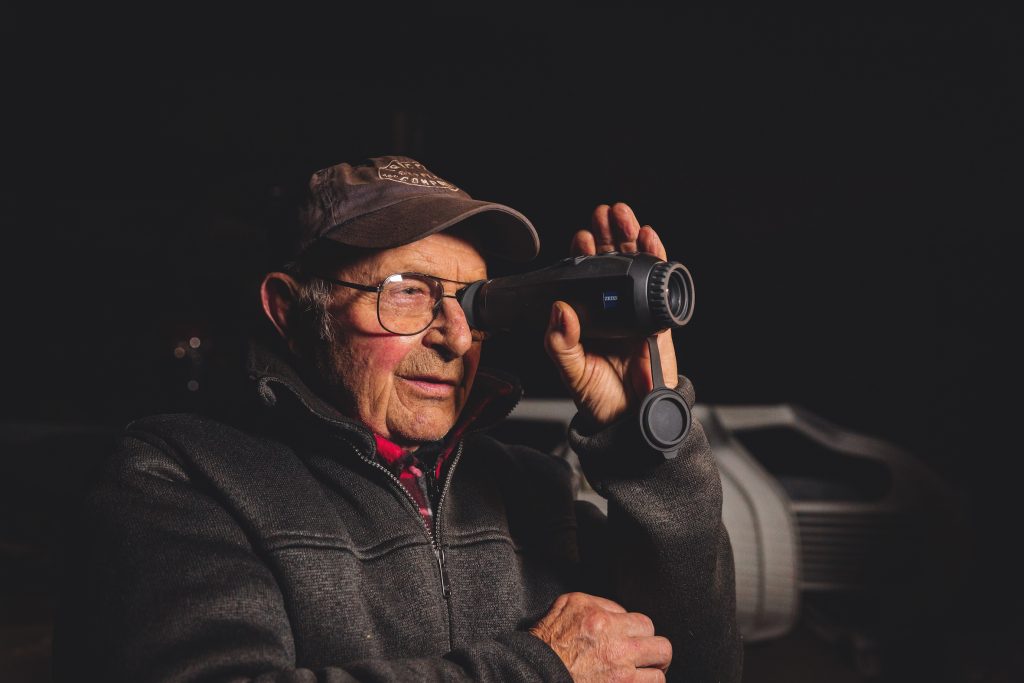Do you have a feeling that you could improve your gun-mount? Well, there’s no better time than the present for…
Win CENS ProFlex DX5 earplugs worth £1,149 – enter here
Gun mount and gun fit – going back to basics

Close decoying pigeons often look like the easiest shot, but too many misses can be the start to a memorable day for all the wrong reasons. The key is attention to basics — I often tell clients that if it feels hard, they are doing it wrong — so the following should go a long way to achieving results that will underpin the rest of your shooting.
Gun fit
With most sporting shotguns, and particularly anything low-combed like many inherited side-by-sides, you must keep your head up while mounting. The gun should be lifted with your arms to arrive directly into your cheek. The exact position in the cheek is dependant on individual faces and gunfitting choices, but you must ensure you are able to see clearly along the rib, a higher sight picture usually being more forgiving than the view of the back of your top lever.
A common problem — and often the cause of misdiagnosis of eye dominance — results from mounting shoulder first, then dropping the head forward on to the comb, dramatically changing where the gun will pattern and your ability to see the pigeon. If you keep your head up but forward, so you are looking towards the target, bringing the gun directly into your cheek and shoulder should ensure that the gun “shoots where you look”, the Holy Grail of shotgunning.
Gun mount
A good day’s pigeon shooting should present every shot, including the snap shot that we can’t miss on one day but disappears as miraculously the next. If your fieldcraft skills are up to scratch, there is usually plenty of time for a good shot and slowing down to ensure an accurate mount will solve most problems.
How to mount the gun, though, is key — especially in a confined hide with several layers of netting, wayward twigs, an unsteady flask of coffee and an ever-hopeful dog to contend with. The golden rules of grouse shooting are often worth recalling when shooting anything at eye level or below: nose over toes and shoot the feet (more on this later).
Nose over toes can be extended to “keep your hips back”. A shotgun should always be mounted to the cheek rather than the shoulder, but if your weight is back the gun won’t be able to find both, and most will go for a comfortable shoulder — and a miss over the top.
If your weight is forward, your head should assume a natural position to receive the gun as it finds your shoulder, something worth considering when siting a hide on uneven ground.
Continued below …
How to practise your gun mount at home
There is no substitute for regular gun mounting practise to achieve a smooth, fluent and efficient mount — bringing the…
Shoot where you look
With the above basics in place, the actual shot itself should be simple and usually best left to your own unconscious hand-eye co-ordination. An overlooked part, though, is remembering that the gun should shoot where you look, not where the bead is. This is particularly true of over-and-unders and can often be thought of as “most guns shoot high”.
The grouse mantra of “shoot the feet” — or even deliberately missing below a dropping target just to find why it won’t break — can help, but a more useful thought can be to train yourself to watch the bird above the barrel and ensure it stays in view throughout the shot. You should therefore watch a decoying pigeon get hit (rising birds becoming the only exception), which tends to ensure good follow-through and deal with any last-minute jinks or unconscious corrections.
Don’t seesaw
Last but not least is to avoid mounting the gun with the back hand and try to keep your muzzles below the approaching bird before and during mounting. Rushing shots sets the gun in a seesaw motion that usually means the barrels unwittingly dip first below, then above, the bird, causing a miss in either place that can be otherwise hard to understand.
Emphasis should be kept on the front hand during mounting. Pushing out and away towards the incoming bird while not coming off its line is as much a feeling as anything, and often a key to ensuring that the shot starts and finishes as a point rather than an aim. Doing this within a pigeon hide is easier said than done but not rushing is again the key. Good luck!
Keeping eyes simple
At Bisley we encourage all clients to try shooting with both eyes open, since it often produces remarkable improvements as long as attention is paid to good basics. But any decoying target should be easy to master even with an eye closed.
Hide building
Too high a front on the hide often makes mounting on to low birds virtually impossible.
Practice targets
A basic decoy/crow can be found at every clay ground. Shoot at its apex to ensure your gun shoots where you look, then work on mounting accurately on to rising and falling targets and monitor your progress.
Related Articles
Get the latest news delivered direct to your door
Subscribe to Shooting Times & Country
Discover the ultimate companion for field sports enthusiasts with Shooting Times & Country Magazine, the UK’s leading weekly publication that has been at the forefront of shooting culture since 1882. Subscribers gain access to expert tips, comprehensive gear reviews, seasonal advice and a vibrant community of like-minded shooters.
Save on shop price when you subscribe with weekly issues featuring in-depth articles on gundog training, exclusive member offers and access to the digital back issue library. A Shooting Times & Country subscription is more than a magazine, don’t just read about the countryside; immerse yourself in its most authoritative and engaging publication.









